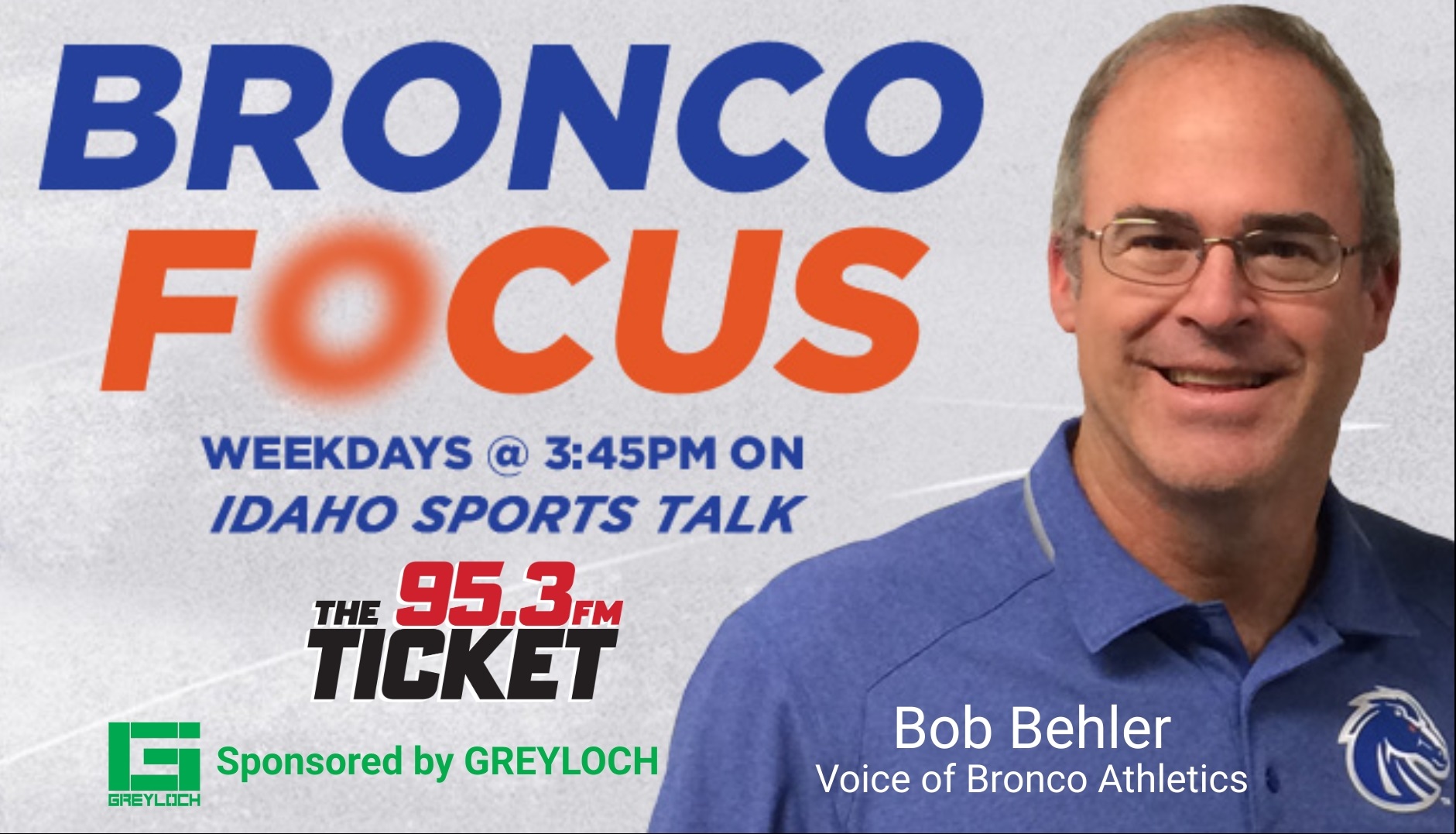By Jake Hamar Morning Grind Host
Change sometimes stinks.
But in the National Football League, change seems to be the order of the day. Four markets are being effected by the monsoon of relocation. Fans will tear up. Civic leaders will cry foul. It’s just the effect of collateral damage that pro sports seems to leave in their wake.
For Southern California, congratulations. You got back your beloved Los Angeles Rams. It’s a move that should have not happened in the first place. If Georgia Frontiere hadn’t decided to pull up her stakes and run to her home state 20 years ago, this wouldn’t have happened.
The Rams belong in LA.
What isn’t right is that a team like the San Diego Chargers, a franchise that has been in the same city for 55 years, is wanting to leave “America’s Finest City.” For a team that has so much history-from the AFL days of Lance Alworth to the swingin’ 70’s of Dan Fouts, Charlie Joiner and Kellen Winslow Sr. to the Bobby Ross coached team that went to the “All-California Bowl” in 1995 with Natrone Means, Junior Seau and Stan Humphries to the early 2000’s high octane offense with Drew Brees and LaDanian Tomlinson. This team has so much history.
In San Diego.
Yes, it’s true that the franchise started in Los Angeles in 1960. Part of the original AFL that included the Dallas Texans (now Kansas City Chiefs), Houston Oilers (now Tennessee Titans), Oakland Raiders, New York Titans (now Jets), Buffalo Bills, Denver Broncos and Boston Patriots, the Chargers were really good. In a market that was saturated with the Rams and college football, the Chargers struggled to find a audience at the LA Coliseum. With much of Southern California’s sporting dollar going to the newly minted LA Dodgers, Rams & the newly-transplanted Lakers, the Chargers flopped at the box office. Despite putting together a 10-4 record and an AFL West Division Championship, the Chargers averaged between 17,000 and 21,800 fans. A December 10, 1960 game between the Chargers and Denver Broncos drew a paltry 9,928 fans.
Not a way to start a life in a fledgling league.
That year, the Chargers went to the AFL Championship Game against the Houston Oilers. Even though Los Angeles had the incredible passing ability of eventual vice-presidential candidate Jack Kemp and the defensive prowess of defensive backs Jimmy Sears and Dick Harris, the Oilers were just too much to handle. Led by the timeless George Blanda, and the dual rushing attack of Dave Smith and Billy Cannon, Houston beat the Chargers 24-16 in the inaugural AFL Title game. You would think Los Angeles fans would embrace the new pro team, especially since the Rams finished 4-7-1 that year.
You would be wrong.
“We were averaging 13,000-14,000 people,” then Chargers owner Barron Hilton told the LA Times in 2009. “And that looked pretty ugly in the Coliseum.”
Fans like what they like, and the Rams were the team in Southern California at that time. Realizing that they would never be able to compete with the NFL or USC and UCLA for that matter, Hilton moved the Chargers down the I-5 to beautiful San Diego just in time for the 1961 season.
The next year, the Chargers were even better, finishing 12-2 in the AFL West, and were complimented by Kemp, and the receiving talents of Dave Kocourek, who made the AFL Pro Bowl that year with 1,055 yards receiving and 4 touchdowns. San Diego also had a pretty solid 2nd option at receiver in tight end Don Norton, who nabbed 816 yards for 6 TD’s. However, the calling card for the Chargers that year was their defense. Led by Charlie McNeil, Paul Maguire and Dick Harris, the Chargers had 49 interceptions in 1961, a then NFL record. In fact, from 1960-63, San Diego had the most games with one or more interceptions with 46, which is still an NFL record.
Again, the Chargers were in the AFL Championship Game, and again, they lost to the Houston Oilers 10-3 at Balboa Stadium in San Diego. Despite the loss, the Chargers had established themselves as one of the premier franchises in professional football.
In 1962, the Chargers fell to 4-10, but that only seemed like a temporary setback. The next year, with Sid Gillman having the team firing on all cylinders, and the emergence of star receiver Lance Alworth, San Diego was back at the top of the AFL elite. Finishing 11-3 and winning another division championship, the Chargers were looking to silence the critics and win their first World Championship.
In the AFL Title game, they weren’t to be denied. Led by quarterback Tobin Rote, Alworth and Keith Lincoln, the Chargers demolished Babe Parilli and the Patriots, 51-10. For a franchise starved for a championship, it was a perfect end to a dominating season.
San Diego was on top of the football world.
Lance Alworth talked about that time in an interview with Chargers.com in 2013.
“They (Boston) were one of the few teams that beat us (during the regular season). We were looking for them”, Alworth said. We went to Boston, and they beat us 10-7 or some ridiculous number and we said this was not going to happen again. We were happy to get them here and I think we unsettled them a little bit with our wide open offense. Keith Lincoln had a fabulous day. It was great to watch.”
The next two seasons, the Chargers would continue to win, but lose in the AFL Championship Game each year to the Buffalo Bills. 5 times in the title game is nothing to sneeze at.
After rounding out the 1960’s with some winning seasons but no playoff appearances, the Chargers would go on to a playoff drought for most of the 1970’s. After years of fruitless results with a couple of different coaches, San Diego would hire local college coaching legend Don Coryell in 1979, and it appeared to be the change the team needed. The team was stacked with offensive talent. Led by quarterback Dan Fouts, who threw for over 4,000 yards in 1979, was joined in the offense by Charlie Joiner, who had over 1,000 receiving yards that year. San Diego finished 12-4, and won the AFC West for the first time since the league was called the AFL. However, playoff disappointment would bring down the Chargers season, as they would lose to Houston in the divisional round, 17-14.
In 1982, the team was involved in one of the greatest playoff games ever. Nicknamed “The Epic in Miami”, the Chargers battled the Miami Dolphins in overtime through heat, dehydration and exhaustion. It appeared that both teams would die of exhaustion before someone would win. It got so bad that Kellen Winslow had to be helped off the field.
The teams battled through four grueling quarters of football, before Fouts led his team down the field 74 yards, setting up a field goal from Rolf Bernirschke, which sealed the game for the Chargers.
Although an important victory for San Diego, their dreams of a Super Bowl with the San Francisco 49ers were dashed the next week by the Cincinnati Bengals in “The Freezer Bowl.”
From 1979-1983, the Chargers would make the playoffs four times and winning the division three of those years. Despite having explosive offenses and being led by super talented players like Fouts, Joiner, Kellen Winslow Sr., Wes Chandler, James Brooks, Lionel James and Chuck Muncie, they could never get to the Super Bowl. After a string of non playoff seasons, Don Coryell left the team, and they continued to struggle under offensive wizard Al Saunders and later on Dan Henning.
The team had hit rock bottom.
Fortunately in 1992, the team hired Bobby Ross, the former Georgia Tech coach who also served time in the miltary, coaching The Citadel in the mid 1970’s. He was one of the few college coaches who made a successful transition to the NFL. His presence was felt immediately, as San Diego won the AFC West with an 11-5 record. Despite the turnaround, the team lost in the divisional round to the Miami Dolphins. Led by quarterback Stan Humphries, running back Natrone Means, wide receiver Tony Martin and linebacker Junior Seau, the Chargers had another solid season in 1994, going 11-5 and defeated the Pittsburgh Steelers in the AFC Championship Game. The team had finally made it to the Super Bowl.
Unfortunately, standing in their way was Steve Young.
In the game, Steve Young threw for six touchdowns, three going to Jerry Rice, as the 49ers destroyed San Diego 49-26. Despite the fact that the Chargers had a pretty decent team at that time, it would be the last time San Diego would go to a Super Bowl.
After a couple of successful but uneventful playoff years, Bobby Ross left the team to become the Detroit Lions new head coach. In his place, the Chargers installed offensive guru Kevin Gilbride as coach. The move proved to be a failure, as San Diego went into a period of losing that would send the franchise into a tailspin. It was definitely not a great time to be a Chargers fan. It also didn’t help that team couldn’t pick Peyton Manning in the 1998 NFL Draft, and had to settle for Washington State QB Ryan Leaf, whose off the field antics and failure to mature as a quarterback cost the team dearly.
The team needed a prayer, and it came in the form of a passer from Purdue.
San Diego GM AJ Smith had his sights set on Ole Miss QB Eli Manning, but the blue chipper told the franchise he didn’t want to play for the Chargers.
“He told me that Archie [Manning, Eli’s father] wishes that we do not select Eli and that they think he would be a good fit in New York [with the Giants],” Smith told the San Diego Union-Tribune on April 22, 2004. “We understand his position and certainly understand his interest in New York, but we will do what we think is the best for the franchise, without a doubt. …“We had a good visit with Archie,” Smith continued, “and expressed our vision for the future of this team and that there was a strong possibility that Eli might be picked by us with the first pick.”
So, the Chargers traded Manning to the New York Giants for the picks that turned out to be Shawne Merriman and Nate Kaeding, and used the fourth overall selection on Philip Rivers, also a prolific passer from North Carolina State. Even though they had Rivers on their roster, the team was experiencing major success with Drew Brees as their quarterback. In 2004, Brees passed for over 4,000 yards and 27 touchdowns as San Diego won the AFC West with a 12-4 record. Not only did Brees light the world on fire, but their running game was explosive, led by LaDanian Tomlinson. He was without a doubt, besides Junior Seau, the greatest player in Chargers history. He ranks fifth in all-time rushing yards with over 13,000 and second with 145 rushing touchdowns.
LT was the man.
In 2006, the team felt compelled to make Rivers their #1 guy, so they let Drew Brees go. During his time, Rivers has been brilliant stats wise, but the team hasn’t been able to get back to the Super Bowl. Numerous coaches have come through, like Marty Schottenheimer and Norv Turner have experienced great regular season success, but weren’t able to get the Chargers to the next level.
The fans in San Diego are immensely loyal to their Chargers. They have been with the team through thick and thin. Which makes it all the more heartbreaking that owner Dean Spanos wants to move this team out of town.
Moving the Chargers to Los Angeles won’t be a good solution for this team. They’d be basically second class citizens in a city that doesn’t really care about them. LA is an area that loves USC football, and pretty much any team that most Southern California residents cheer for since the Rams and Raiders left in 1995. In an area that has in excess of 16 million people, a lot of people root for a mix of NFL teams. You can’t just say its a Rams town when it isn’t.
Which spells doom for the Chargers.
Dean Spanos is caught between a rock and a hard place. He pretty much has poisoned the well in San Diego, not liking the proposals that city officials have come up for the team. But now that he has an option to move in with the Rams in Inglewood, and become the “red headed step child” of LA, it might be to his benefit to wag his tail between his legs and try and work something out with San Diego politicians.
Sometimes, eating crap is better than eating no crap at all.








